- Blog/
Discovering Japan's vibrant coffee culture
Table of Contents
It was a cold, rainy October morning at Haneda Airport. I was freezing, pulling my hoodie tight against the damp. I’d just landed and, being a total aviation geek, my first stop had to be the observation deck before I even thought about my hostel. I was watching the planes cutting through the rain on the tarmac, but that’s not what grabbed me. It was the Costa Coffee. There was a line, a steady stream of people just filing in, wrapping their cold hands around steaming cups.
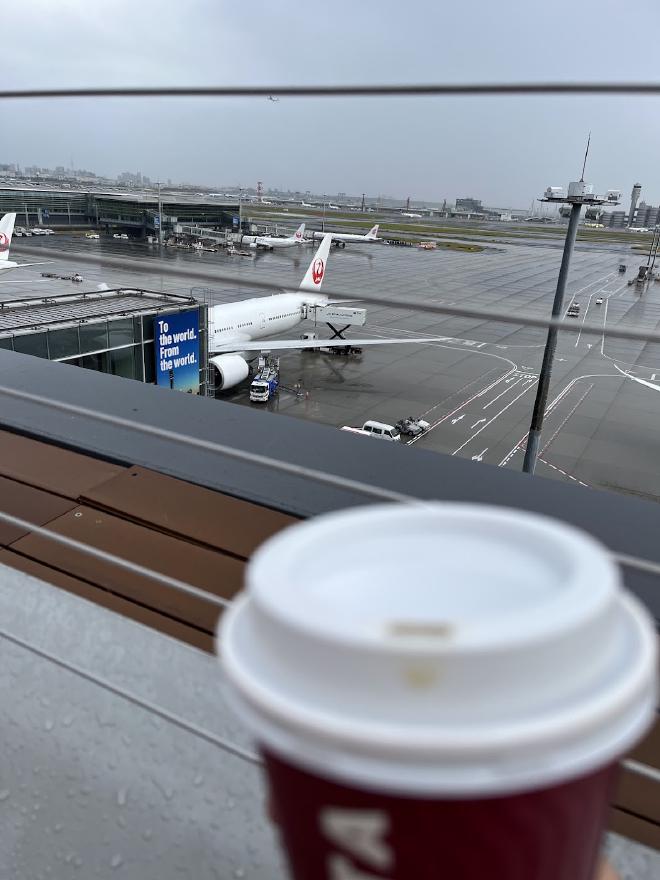
Coffee at every corner #
My coffee revelation at Haneda was just the beginning. As I walked around Tokyo, I was stopping every few minutes, just stunned. There was coffee everywhere. Vending machines are on basically every street, lit up like silent robot baristas, offering every kind of coffee you can imagine—hot, cold, black, latte, sweet, not sweet. But the real shock? My first time in a Japanese convenience store. The konbini. These places (7-Eleven, Lawson, Family Mart) aren’t just for quick snacks; they’re coffee shrines. I’m talking entire aisles. Glass-door fridges packed with rows and rows of bottled and canned coffees, from simple black brews to seasonal flavours.
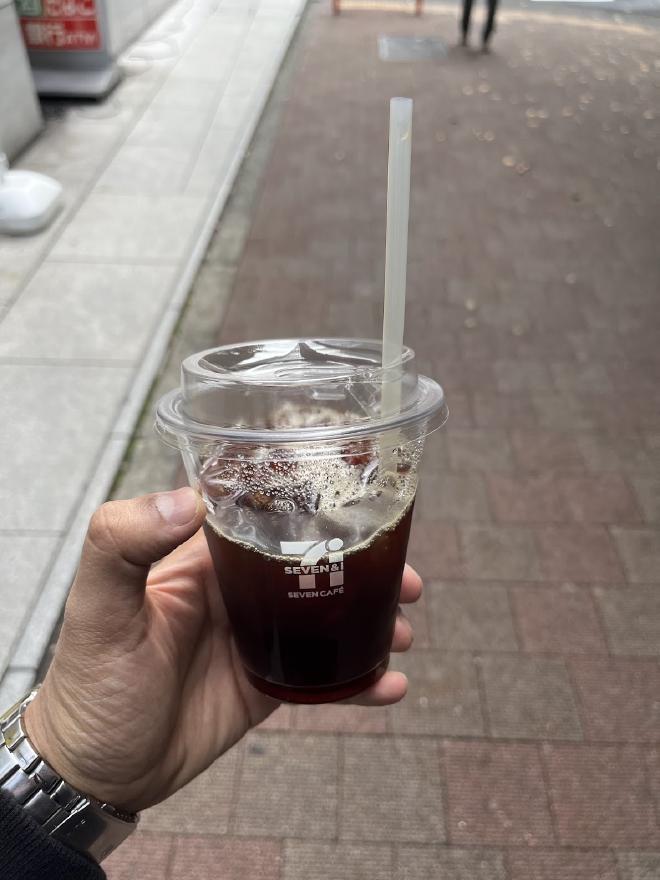
Like many, I had long imagined Japan as the quintessential tea-drinking nation, drawing comparisons to my home country India, where tea is ubiquitous. However, 14 days in, it was obvious I was wrong. Japan is just as obsessed with coffee, and it’s not a small thing, it’s deep and it’s everywhere. That was the first big shock of my trip.
The coffee scene in Japan runs far deeper than vending machines and konbini cups. You can’t walk two blocks without seeing a big chain: Starbucks, Tully’s, Duotor. These weren’t just occasional outposts, they were everywhere, and always busy. But the real magic happened when I started wandering off the main roads and found the smaller, artsy cafés.
Before visiting Japan, I had a completely misguided notion. I’d put Japan in the “tea-only” box. While the country’s tea traditions are indeed rich and enduring, my assumption about coffee couldn’t have been more wrong. This wasn’t just a recent trend or Western influence, Japan’s relationship with coffee runs surprisingly deep.
Tokyo cafe hopping: A celebration of aesthetics & coffee #
Tokyo’s café scene is meticulous but feels effortless. I only had four days in the city and a massive list of places to visit. I embarked on a whirlwind coffee tour that took me to some of the most unique and captivating cafes in the city.
From the minimalist charm of Little Nap to the industrial-chic vibes of Glitch, each space told its own story. Glitch is housed in a modern minimalist space with concrete floors, simple wooden furniture, and a prominent Probat roaster where they roast their beans in-house. The interior design reflects Japanese minimalism while maintaining an industrial coffee-roasting atmosphere. I was mesmerized watching the barista. His pour-over was perfect, all precise concentric circles. Pure craft.
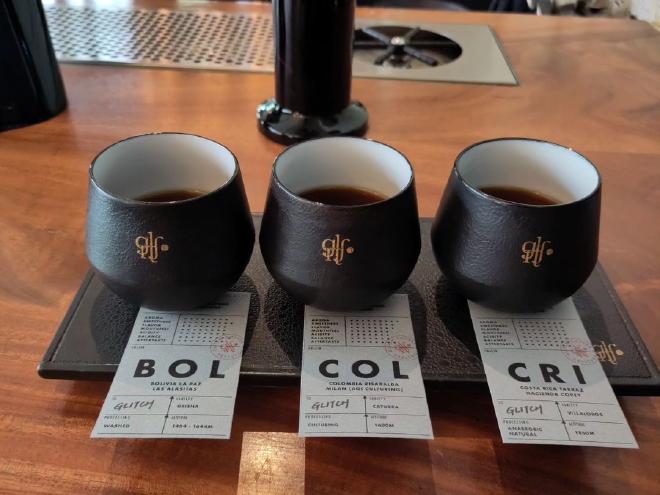
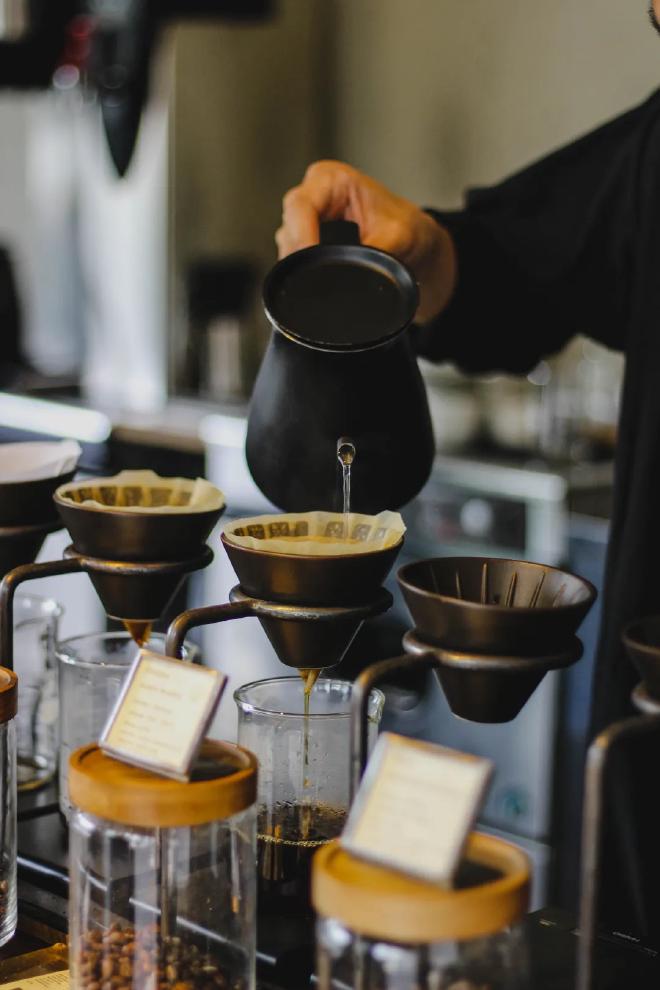
I visited Onibus, a converted traditional Japanese house turned café, where old architecture meets modern coffee culture. What makes this spot special is the second-floor seating area where customers can enjoy their coffee while watching trains glide past at eye level through the windows. This creates a uniquely Tokyo experience - the combination of traditional architecture, specialty coffee, and urban railway infrastructure.
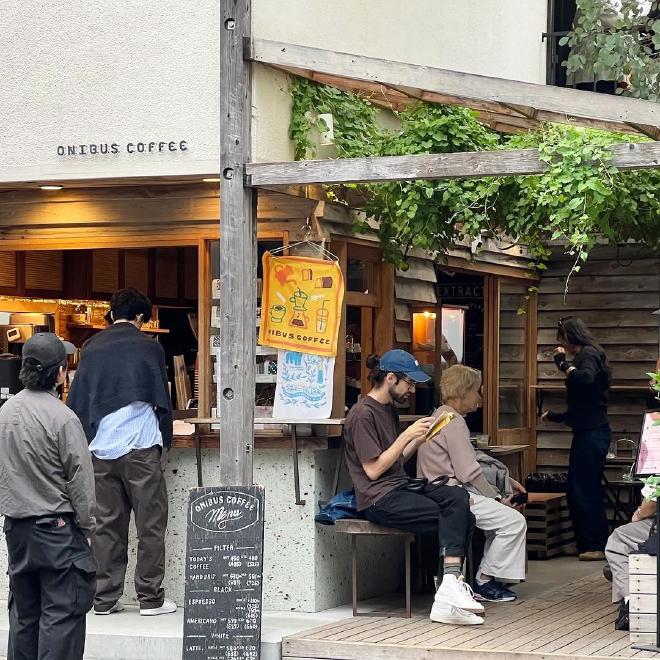
Fuglen brought a touch of Norwegian coffee culture to a quiet Shibuya backstreet, with its mid-century modern furniture and Nordic approach to light roasts. What makes Fuglen Tokyo particularly special is its dual identity: During the day, it operates as a serious specialty coffee shop; At night, it transforms into a cocktail bar, making it a rare “day-to-night” establishment in Tokyo’s coffee scene.
All Seasons Coffee proved to be a hidden gem in Shinjuku, where the seasonal menu changes four times a year to reflect nature’s rhythm. They carefully select and roast beans to complement different weather conditions and seasonal changes. The café’s minimalist interior design follows classic Japanese aesthetics, while their in-house roasting operation maintains a focus on medium roast profiles.
Heart’s Light Coffee sits in a peaceful corner, tucked away from the area’s high-end boutiques and busy streets. They’re particularly known for their light roast approach, which aims to highlight the delicate, fruit-forward notes in their carefully sourced single-origin beans. As soon as you enter you get hit by an amazing smell of fresh coffee and cool jazzy tunes being played by an amazing sound system from the owner. What sets Heart’s Light apart is their distinctive menu that bridges Australian and Japanese coffee cultures. Their signature drink, the LSD (their take on Melbourne’s “magic” coffee), showcases this fusion perfectly.
Paddlers is a significant player in Tokyo’s specialty coffee scene with its strong connection to Portland, Oregon’s coffee culture. While the shop has made its name serving exclusively Stumptown Coffee Roasters beans - a nod to its Portland connections - it’s the vintage analog sound system that truly sets it apart. The owners are passionate about both coffee and music, specifically jazz and soul, and have created an environment where these two cultures blend seamlessly.
After hopping through Tokyo’s intimate coffee spots I ended up at an unexpected final stop: the massive Starbucks Reserve Roastery in Nakameguro. Sure, it may seem ironic to end a specialty coffee tour at a Starbucks, but this isn’t the typical chain outlet. The Starbucks Reserve Roastery in Tokyo stands as the coffee giant’s largest roastery in the world, spanning four floors across 32,000 square feet. It was designed by Japanese architect Kengo Kuma, featuring a stunning origami-inspired ceiling with over 2,100 wooden blocks in a twisting pattern that represents the unfolding of coffee’s aroma. Beyond coffee, the Roastery houses Japan’s first Princi Italian bakery, a Teavana tea room offering innovative tea cocktails, and the exclusive Arriviamo cocktail bar where coffee and spirits merge. Each floor offers distinct experiences, from watching the coffee roasting process to enjoying coffee-infused cocktails, making it more than just a café.
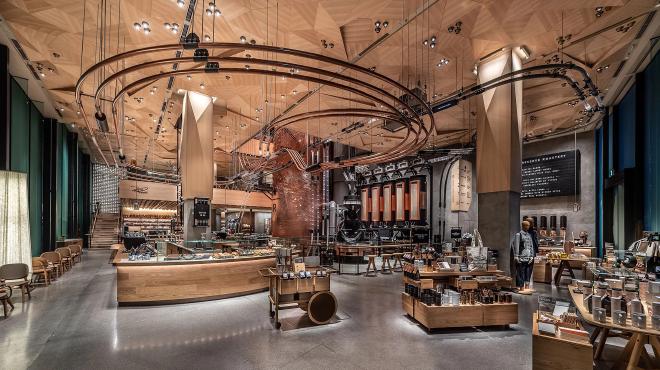
What struck me most was the way each café carved out its own distinct personality while maintaining that unmistakably Japanese attention to detail. The real magic wasn’t in any single element, but in the way everything came together seamlessly. Looking back, my café-hopping adventure barely scratched the surface of what Tokyo’s coffee scene has to offer, but it left me with a deep appreciation for how this city manages to make every cup feel like a unique artwork.
Historical roots #
How did coffee even get this big in Japan? It turns out it goes way back. The story starts in the 17th century with the Dutch, who first brought it to Nagasaki during the Edo period. Back then, Japan was totally closed off to the world (the Sakoku policy), so coffee was a rare commodity reserved for governors, translators, and few businessmen.
When Japan finally opened up in the Meiji period (late 1800s), more people could get it, but it was still expensive, mostly for the upper class. The first real coffeehouse, Kahiichakan, opened in Tokyo in 1888. It got people curious, but it failed pretty quickly. Coffee finally got a real foothold in the 1910s and 20s, thanks to a place called Café Paulista that served affordable Brazilian coffee.
In 1933, Tadao Ueshima, the “Father of Coffee in Japan,” launched his company, Ueshima Tadao Shoten, which eventually revolutionized Japan’s coffee industry by developing canned coffee in the 1960s. World War II had temporarily halted Japan’s coffee imports, but by the 1960s, coffee culture surged back, fuelled by an increasing fascination with Western lifestyle and products.
Green Tea & Coffee: A harmonious coexistence #
Interestingly, the rise of coffee hasn’t diminished Japan’s love for green tea. If anything, it has created a beautiful coexistence. In Japan’s diverse beverage market, coffee has carved out a remarkable position, standing second only to green tea among non-alcoholic drinks.
Everywhere I turned during my stay, I encountered the familiar sight of green tea bottles. Every convenience store’s refrigerated section was dominated by an impressive array of tea brands – Ito En, Suntory, and Kirin leading the charge with their signature products like Oi Ocha and Ayataka. RTD green tea seamlessly bridges traditional tea culture with contemporary convenience. The Japanese have managed to preserve the essence of their tea heritage while making it instantly accessible. Whether it’s businesspeople grabbing a bottle for their commute or tourists like me needing refreshment, RTD green tea serves as the go-to thirst quencher.
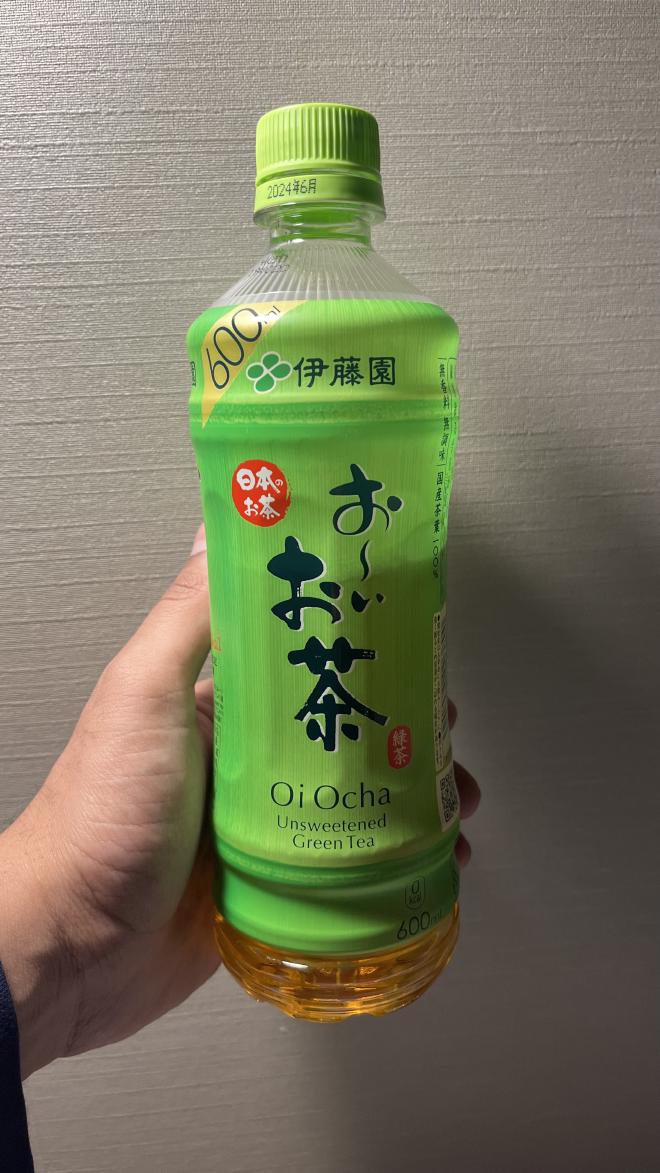
Matcha is still culturally vital, but it’s also modern. The matcha latte is a staple in every café.
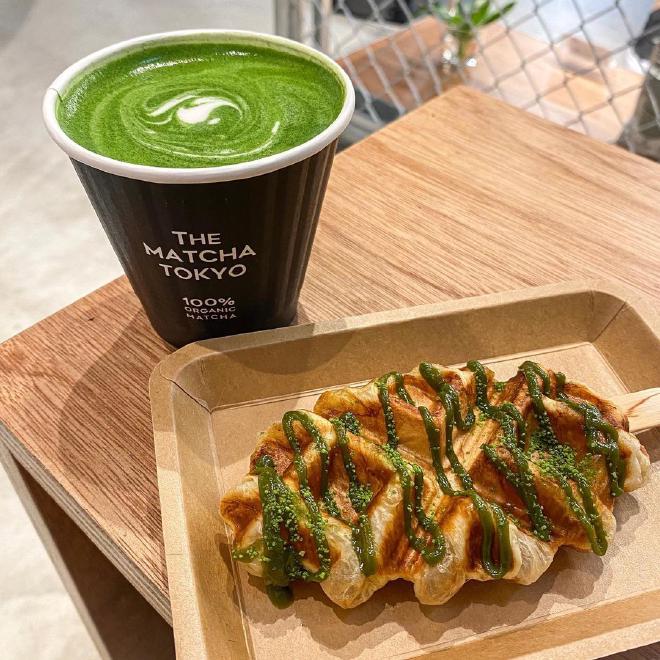
Japan’s coffee culture is a perfect mix of tradition and innovation. From vending machine cans to meticulously crafted pour-overs, Japan’s coffee scene perfectly embodies the nation’s pursuit of perfection. Even the subtle addition of green tea to coffee showcases the nation’s flair for experimentation. It’s a culture that has taken a foreign drink and transformed it into something uniquely Japanese.